Snowdrops just along the lane in Dancing Bear Wood
We sat grown quiet at the name of love;
We saw the last embers of daylight die,
And in the trembling blue-green of the sky
A moon, worn as if it had been a shell
Washed by time’s waters as they rose and fell
About the stars and broke in days and years.
W B Yeats
Although it’s been a bit chilly here between the heath and the sea we have had some glorious clear skies and flaming sunsets as the moon has swelled towards full. Often in daytime I’ve looked up see its fragile oval sailing above and always think of W B Yeats’ moon, ‘worn as if it had been a shell’. Why does the moon seem so lacy and transparent in daytime?
I only recently realised how little attention I had ever paid to its bumps and hollows. My friend-along-the-lane had called round for me and we were going for a walk on the heath. She had her binoculars with her. We paused for a moment between gorse and heather and she handed them to me.
‘Here, look through these at the lovely moon’.
Wow. It was like waking up and seeing the moon for the first time.
I really must remember to take my own binoculars each time I go out. They were a Christmas present and I haven’t yet got into the habit of slinging them around my neck when I head for the door. But without them I’m missing so much. There’s the moon of course, and the heron which is sometimes an egret but I’m too far away to be sure. And, you never know, perhaps even an otter or a kingfisher if I’m lucky. I’ll let you know.
Have you decided on a name for today’s full moon? Mostly you see the February moon listed as Snow Moon. This is how it was known to some of the Native American tribes. Some, but not all, because of course the climate varied widely from territory to territory. Other names include Hunger Moon, Bear Moon, Storm Moon, Eagle Moon and Month of the Bony Moon (which I like).
Here in Norfolk, there is sometimes deep snow in February but more often, other symbols of the month seem more appropriate. I would probably think first of snowdrops, catkins and lambs as markers of February. Or even pancakes! Hmmm, Catkin Moon or Lambs Tail Moon? Both sound lovely, so it’s difficult! Which would you go for? Or can you think of something more fitting for where you live?
Hazel catkins near the alder carr
Counting on the Moon
Our ancient ancestors may have marked time by the phases of the moon. Excavated tally sticks imply that people have perhaps counted days this way since the Paleolithic age, around 20,000 years ago. The oldest known ‘stick’, a curved dark bone about 10cm long with a sharp piece of quartz attached to one end, was discovered in 1950 in the Democratic Republic of Congo. Incised with a series of possible tally marks in three columns, it has been interpreted by some as having astronomical significance or of representing a six-month lunar calendar. Its use is still debated but most scholars do believe that it was at least used for mathematical calculations, if not astronomical ones.
There has even been the suggestion by mathematician Claudia Vaslavsky that the creator may have been a woman, tracking the lunar phases in relation to her menstrual cycle.
As for the oldest actual depiction of the moon, it may be an image on the Tal-Qadi slab from a temple in Malta which is at least 6,500 years old (Late Neolithic). This stone slab is incised with some of the earliest known examples of the star-like motifs that archaeologists term asterisks. Here, stars displaying varying numbers of rays sit in clusters within long segments radiating from a central point like a sundial.
One of the segments contains only a carved crescent. What else could this be but the moon? The interpretation that I’ve seen states cautiously that the asterisks are ‘associated with what seems to be a lunar representation displaying possibly stars in a night sky’. I think that if you study an image of the slab itself (see resources below) you won’t need much convincing!
For a prehistoric object that unequivocally depicts a crescent moon (and the sun/full moon, some constellations and calendrical markers) look no further than the Nebra Sky Disc, dated at 1800-1600 BCE (Early Bronze Age). Found buried on the Mittelburg hill near Nebra in Germany in 1999, it’s officially the oldest concrete depiction of astronomical phenomena known from anywhere in the world. A beautiful blue-green circle around 30cm in diameter, it is inlaid with gold symbols. I saw a replica of it in the Maritime Museum at Falmouth, Cornwall (the gold was from the River Carnon in Cornwall and the tin used in its making is also known to have come from Cornwall).
It is absolutely stunning.
In fact the Nebra Sky disc was my inspiration for a star map of the constellation Lyra that I made for an art intervention/performance piece a decade ago. The action was set on a Bronze Age burial mound called Fiddler’s Hill - but that’s another story ;)
Lyra sky disc made for ‘Bridge’, 2012 - seen here in the snow on the old railway line
Lyra star disc in action on Fiddler’s Hill burial mound, Norfolk
Over the land freckled with snow half-thawed
The speculating rooks at their nests cawed
And saw from elm-tops, delicate as flower of grass,
What we below could not see, Winter pass.
Edward Thomas, Thaw
Candlemas: beeswax candle in St Andrew’s church
The badger peeps out of his hole on Candlemas Day and if he sees snow he walks abroad, but if the sun is shining he draws back into his hole.
(German country lore, meaning that sunshine in early February is a sign of hard weather still to come.)
I remember finding this badger proverb while doing research for a past Candlemas project. As you can see, I took a few liberties in the medieval church of St Andrew not far from our old home. Like many other old Norfolk churches, it features beautiful ancient carved pew ends called poppyheads, the ‘poppy’ part being thought to come from the French poupée meaning a doll or puppet.
The poppyheads of St Andrew’s are a vivid presence in the church and each very much an individual. Even those seemingly of the same design vary hugely in size and proportions. Probably they took shape under the hand of several different carvers. A few of them have worn away or been broken off during their long history, but even the stubs that are left exude magic.
I was already thinking about candles, since Candlemas (2 February) was traditionally the day that all the church’s candles were blessed. I’d been reading about the crucial role of candles in medieval church ritual and devotions, including for what we might term magical practice. If you had an ailment in a certain part of your body - for example, a broken arm - you could have a candle made to the exact length of that body part. This you would donate to your parish church to be burned in front of a saint’s image, and as the candle dwindled so would your ailment melt away. For something like a leg, the candle would be twisted around into a spiral to make it easier to handle.
I will leave the ideas behind this particular candle to your imagination. But I will say this: it would surely be surprising if these old, old carvings, worn smooth by the touch of many hands, had never played a part in a little gentle fertility folk-magic in their time ;)
Two years ago
6 February 2021
Candlemas sunset February 2021
Earlier this week we had a sunny afternoon here in Norfolk. I told myself that if I walked down the lane to look for the source of the nearby stream for just an hour there would be plenty of time left to do all the other things I’d resolved to do that day.
When I eventually got back to the cottage it was practically dark.
But I saw a barn owl lift silently from the hedgerow just beside what MIGHT have been the source of the Hundred Stream.
And I smelled the freshness of the spring earth.
And then there was this sunset.
I’ve dug out an old video in case you would like to see exactly what happened:
Last year
6 February 2022
Amazingly, for once my timing was impeccable and I slipped out of the cottage to walk across the heath to the stream just as a watery sun emerged for a few minutes. The lambs tails by the stream were dancing a merry jig.
Is spring beginning to creep across the land where you are? By the time I got home the sky was back to its glowering self and I felt very lucky to be able to lay the fire ready for later.
Favourite place
The White Feast
Once, so long ago that the memory is almost lost in deep time, I cooked a meal for my parents’ friends, their ex next-door-neighbours. Andrée and Peter had moved into the countryside but were keen to keep in touch, and to see the cottage where I was living. For some reason I thought I’d cook them an all-white dinner - with a touch of green, like snowdrops or a Bridie Cross - because the visit coincided with Imbolc. I really don’t know what prompted me to do something so seemingly eccentric. I had no reason to believe that our guests would even have heard of Imbolc or St Brigid!
I don’t recall what was on the menu that evening, or the reaction of the diners, although I think (hope!) they enjoyed it. But I do remember the excitement of the planning, and making sure that every detail fitted with the white and green theme.
It certainly won’t have been a grand meal; probably something like cauliflower cheese with potatoes and leeks, followed by panna cotta or a pavlova. Maybe with white wine or white grape juice. Then, I might not have thought of the preparation of this Feast as a ritual. Actually, it was.
In a way I suppose it was a subversive act as I remember having it impressed upon us in school cookery lessons that we should always strive to make a meal attractive with lots of contrasting colours. Of course we now know that this makes sense nutritionally too. But ritual is different, isn’t it? A mindful act, set apart from what we do without much thought each day.
St Brigid’s Cauliflower, Leek and Mustard Soup
St Brigid’s Soup
With the scarf-and-gloves days we’ve had recently I thought it was high time to share another soup recipe. And I have to say it’s probably my favourite of all the soups I’ve made. It’s light and delicate while still being warming, and the colour is so springlike and pretty. While I definitely didn’t make this for my White Feast, it would have fitted the bill perfectly.
I tweaked this soup from a Riverford recipe to what you see here and you can tweak it further of course, depending on what veg you have available. I suggest keeping the colours to green or white though. The non-negotiable is the mustard - it’s transformative! I sprinkled my bowl, as I often do, with toasted sunflower and pumpkin seeds for extra goodness (and more green and white!) but this is entirely optional.
1 onion
2 leeks
1 cauliflower
1 stick celery
2 cloves garlic
1 courgette
1 parsnip
1 teaspoon dried thyme
A small handful of sage leaves, chopped
700ml veg stock (this is what the recipe says but I never measure)
A good dash of almond milk
1 tbsp Dijon mustard (could use wholegrain)
Salt and pepper to taste
Olive oil
Soften the onion in the oil, add celery, garlic, leeks, cauliflower, parsnip, and courgette all cut quite small and sweat for a few minutes before adding the stock (I use saved veg cooking water plus bouillon powder). Add thyme and sage.
Allow to simmer until soft, around 15 minutes, before adding almond milk, mustard, salt and pepper. Blend before serving.
If you try this I hope you enjoy it as much as I did!
I’d love to know what you think.
Until next time at the new moon, I’ll leave you with a photo taken this evening, just as the moon became full.
Happisburgh, 5 February 2023
A few resources
Tal-Qadi Slab:
Ishango Bone:
https://en.wikipedia.org/wiki/Ishango_bone
Claudia Zaslavsky’s theory:
https://web.nmsu.edu/~pscott/isgem71.htm
Nebra Sky Disc:
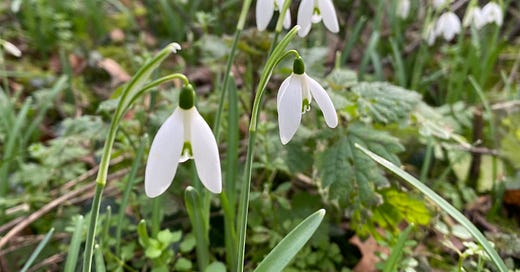



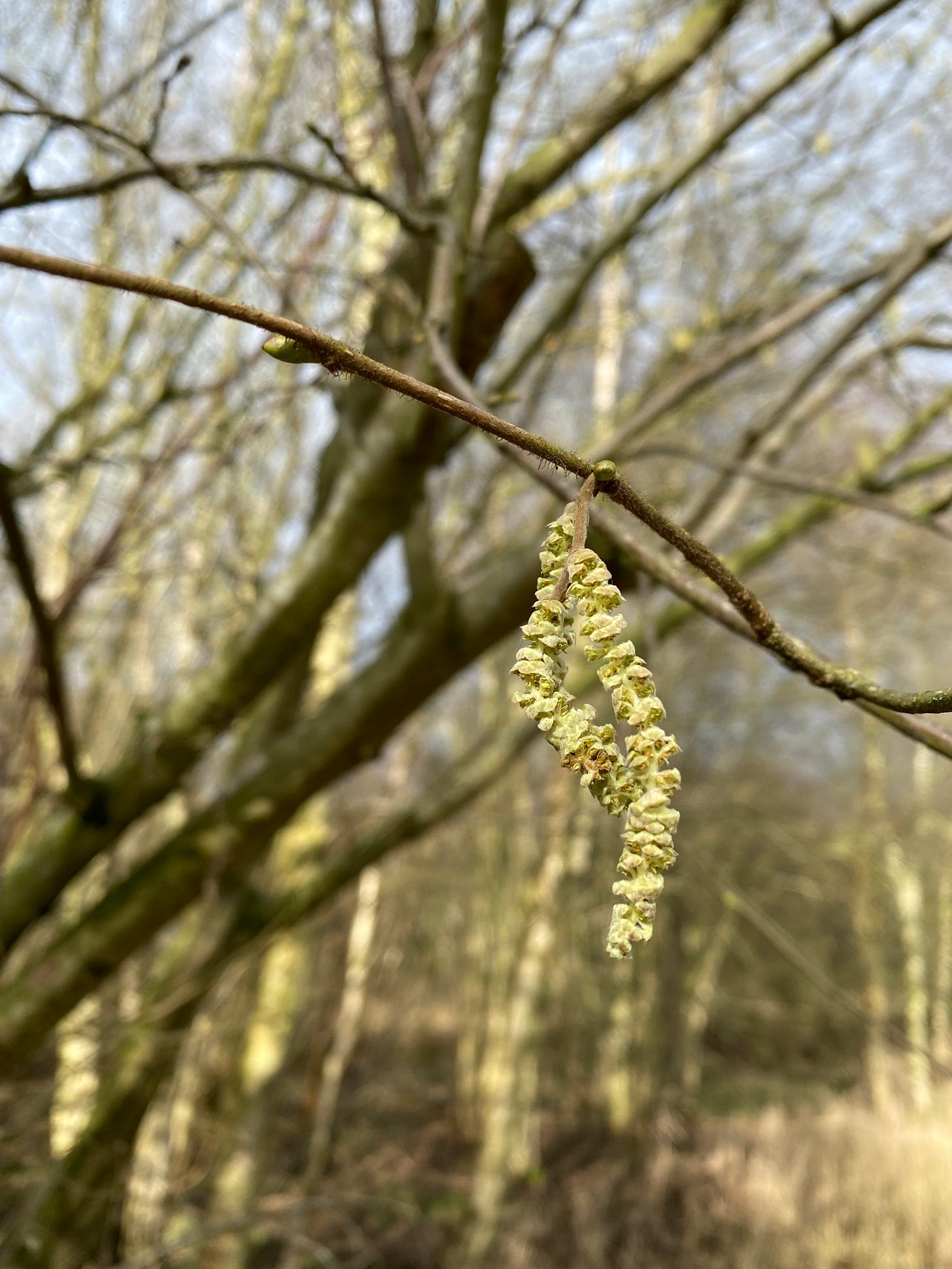
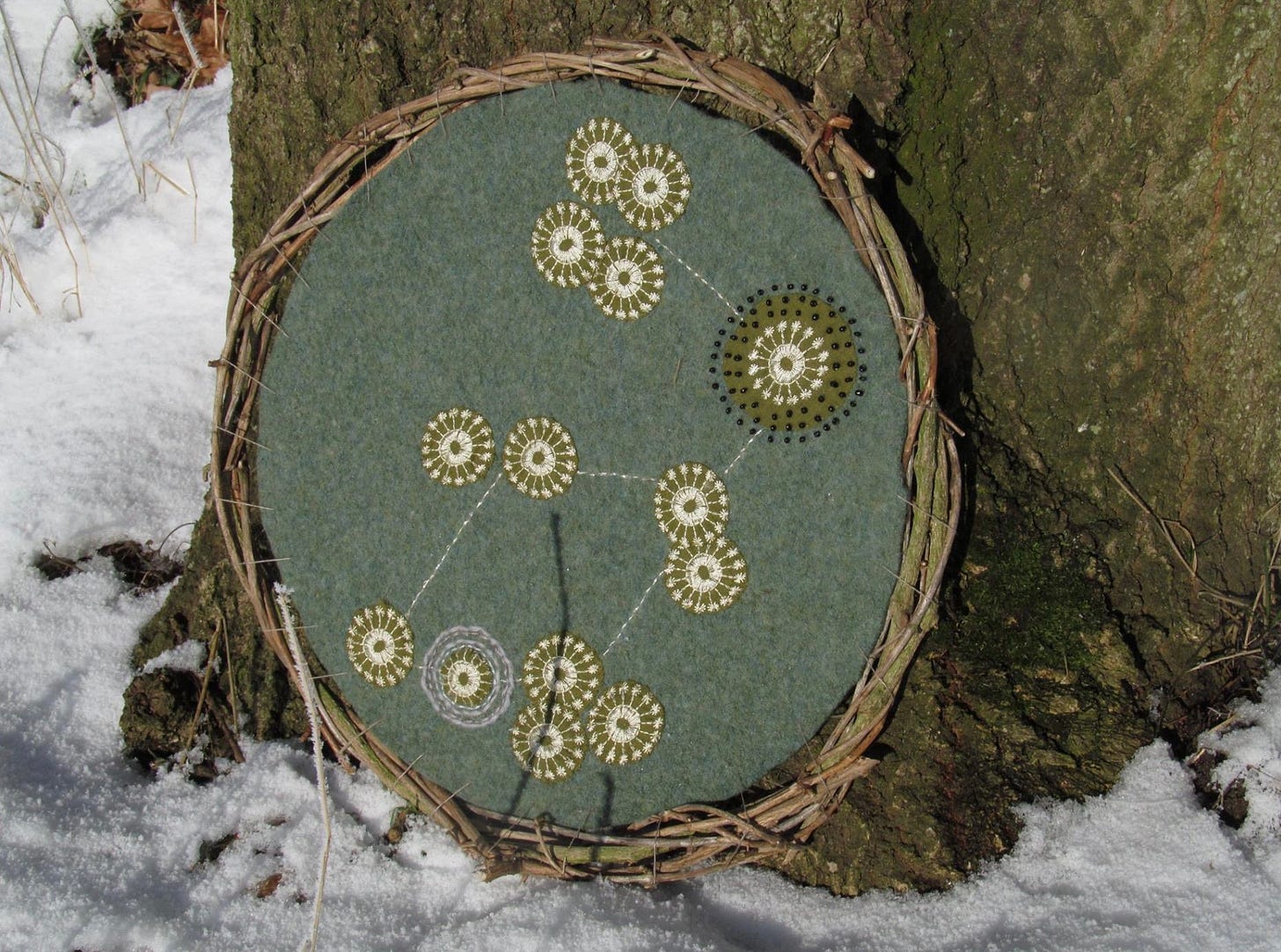
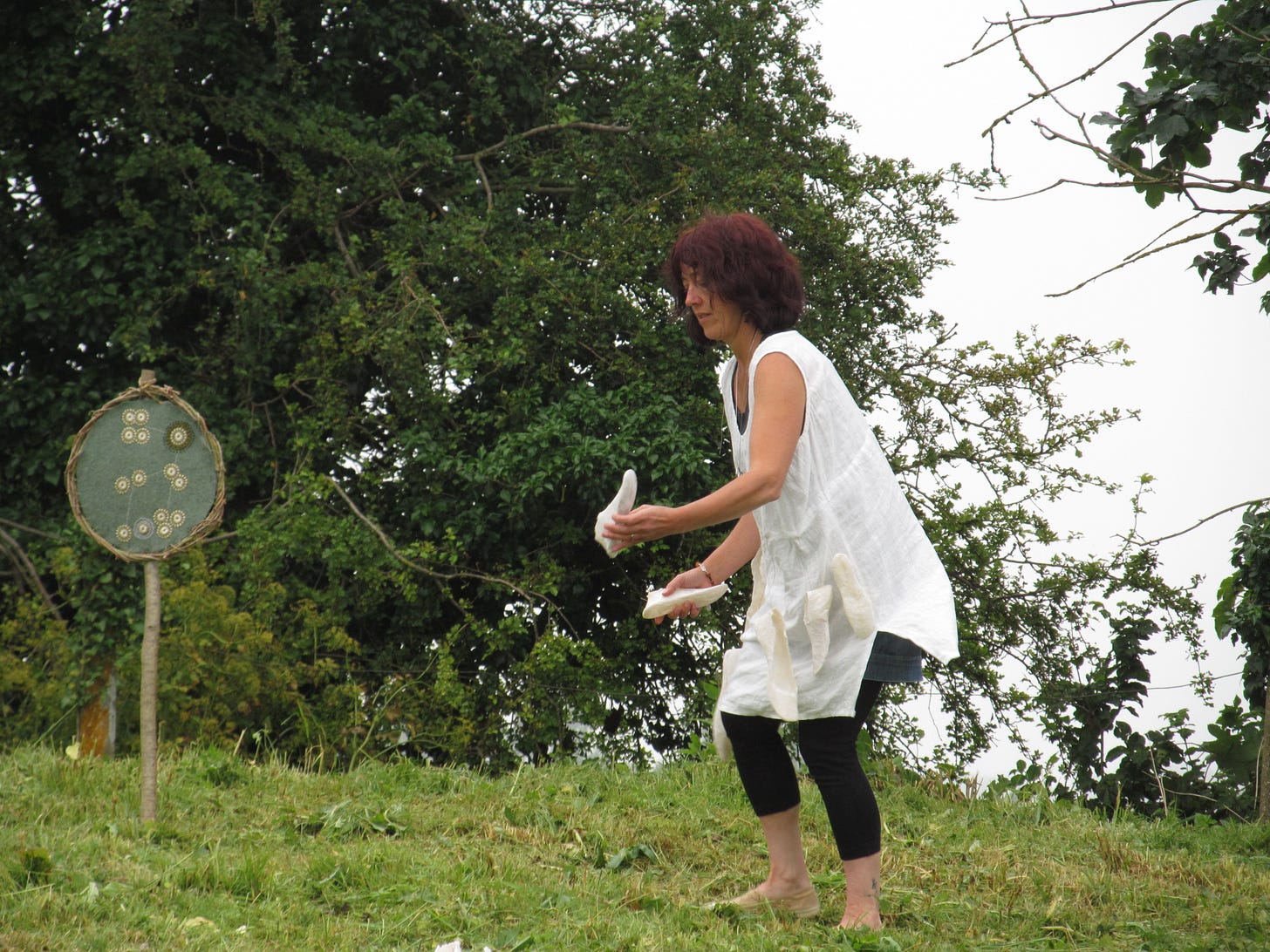
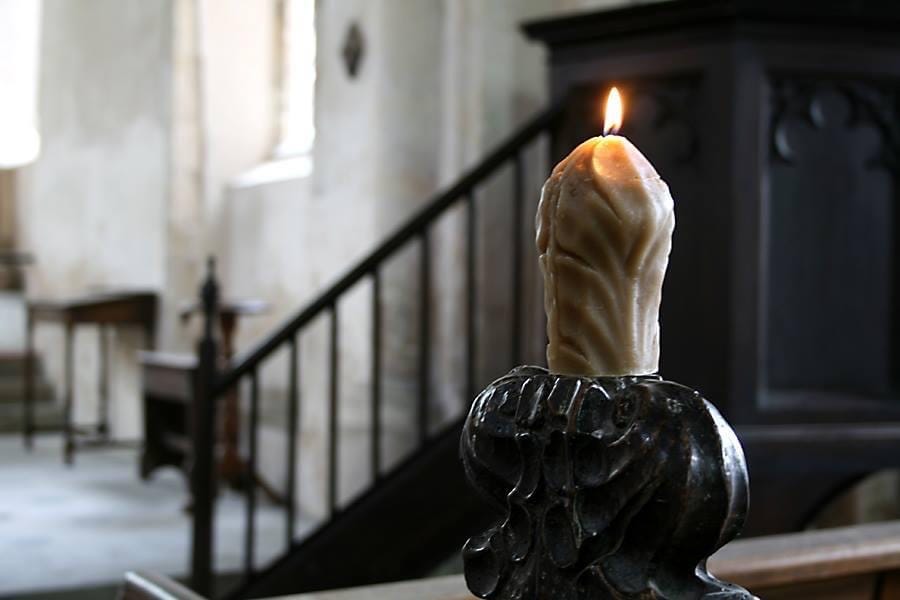
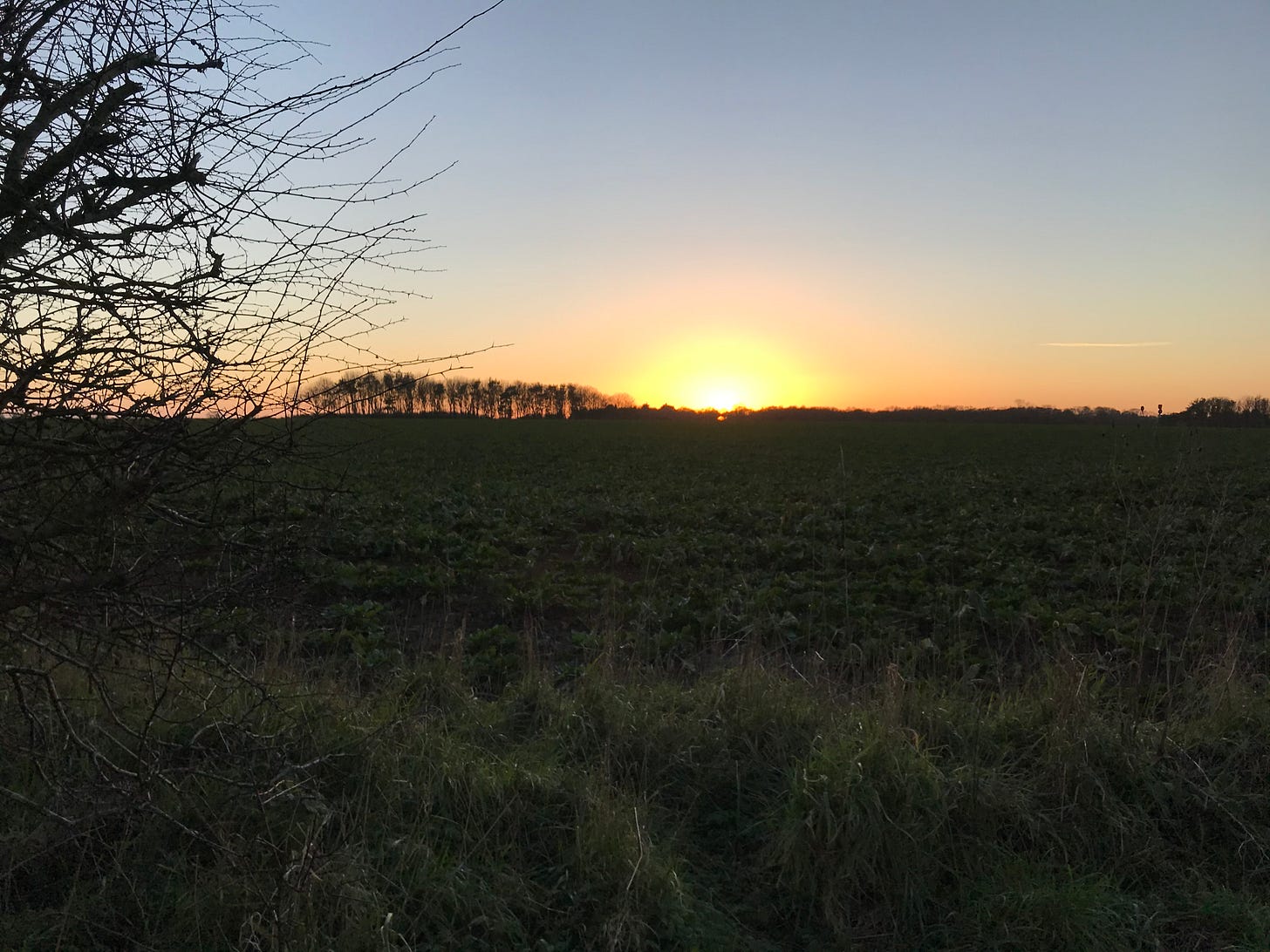
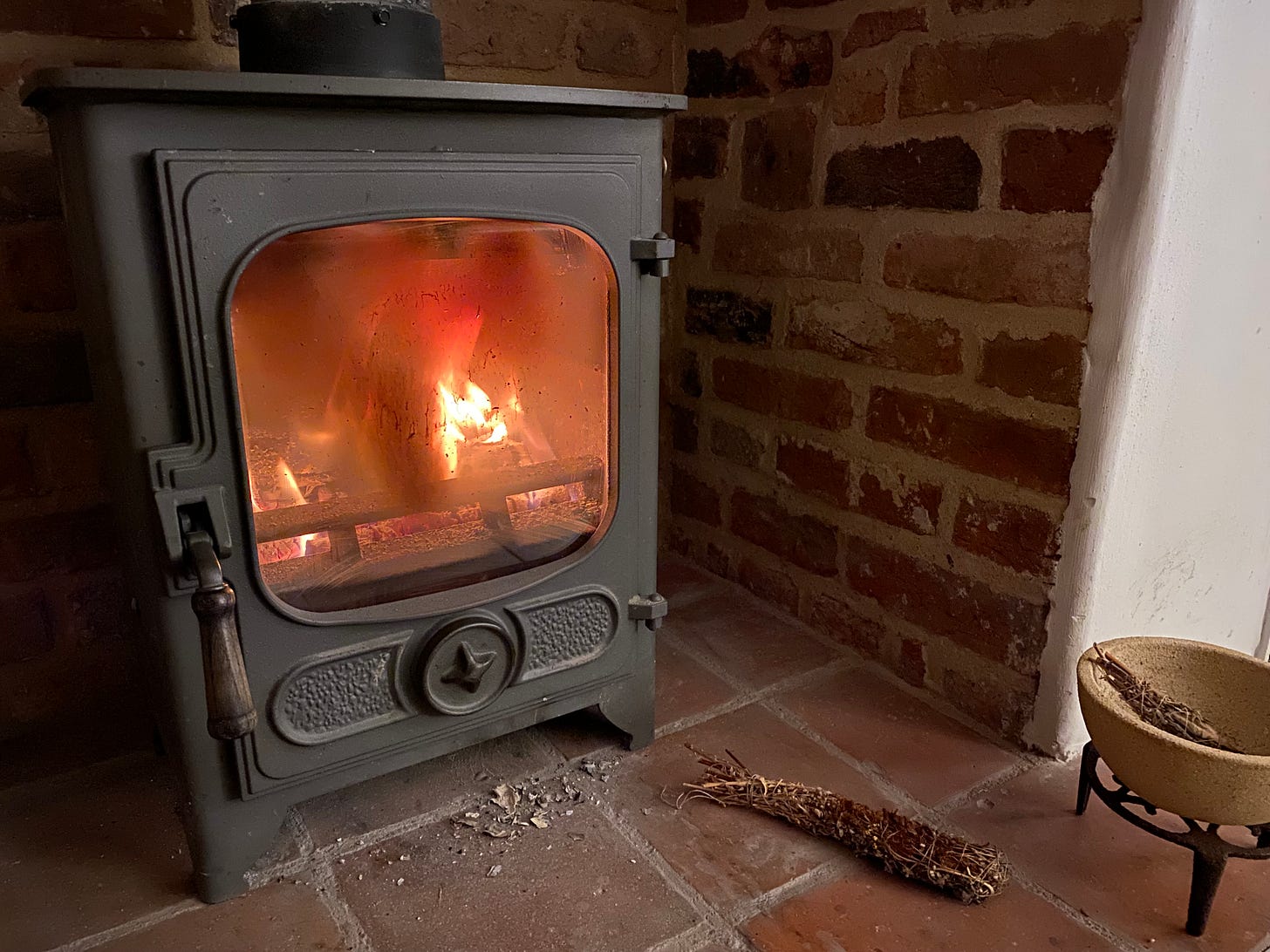
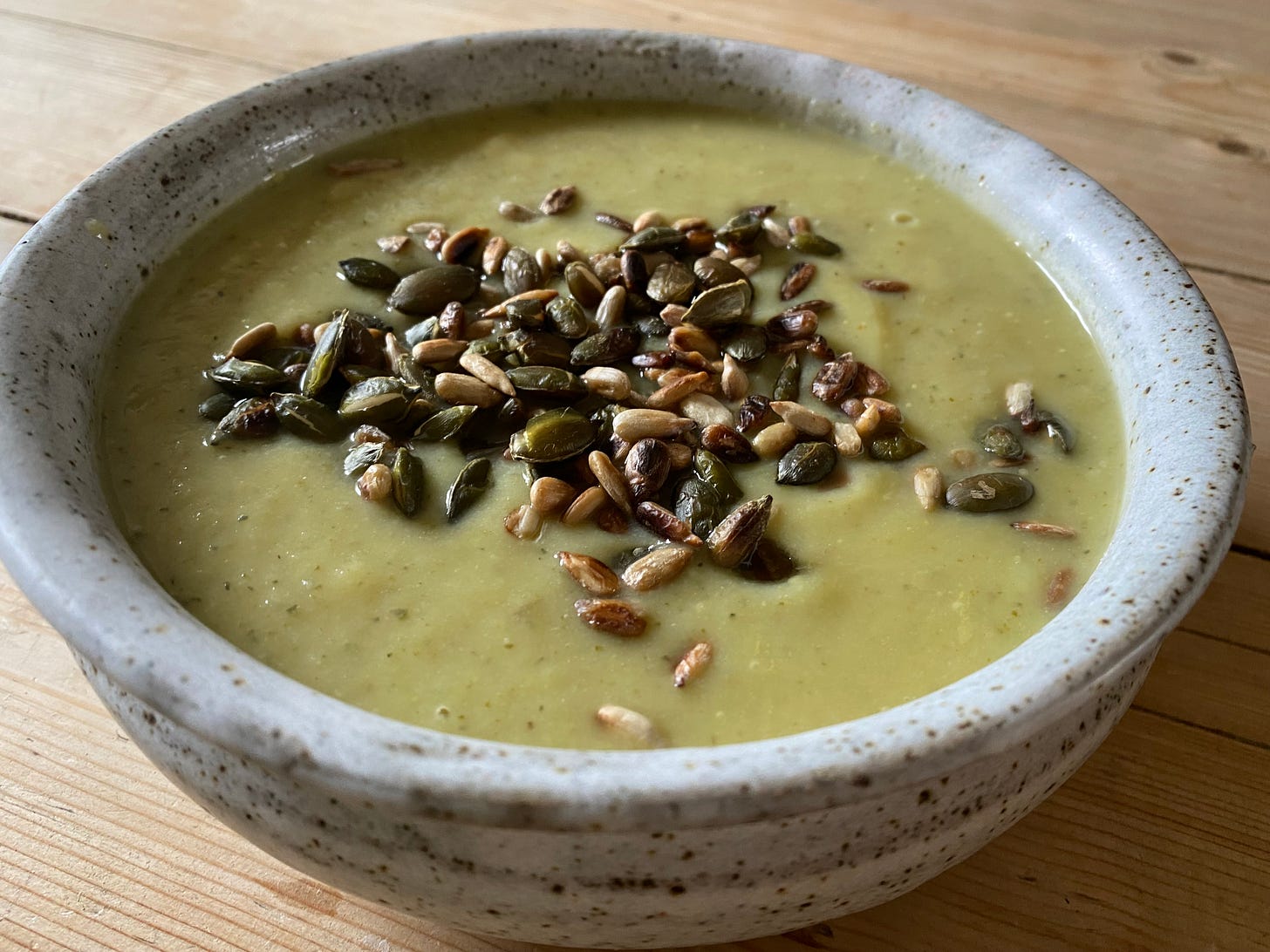
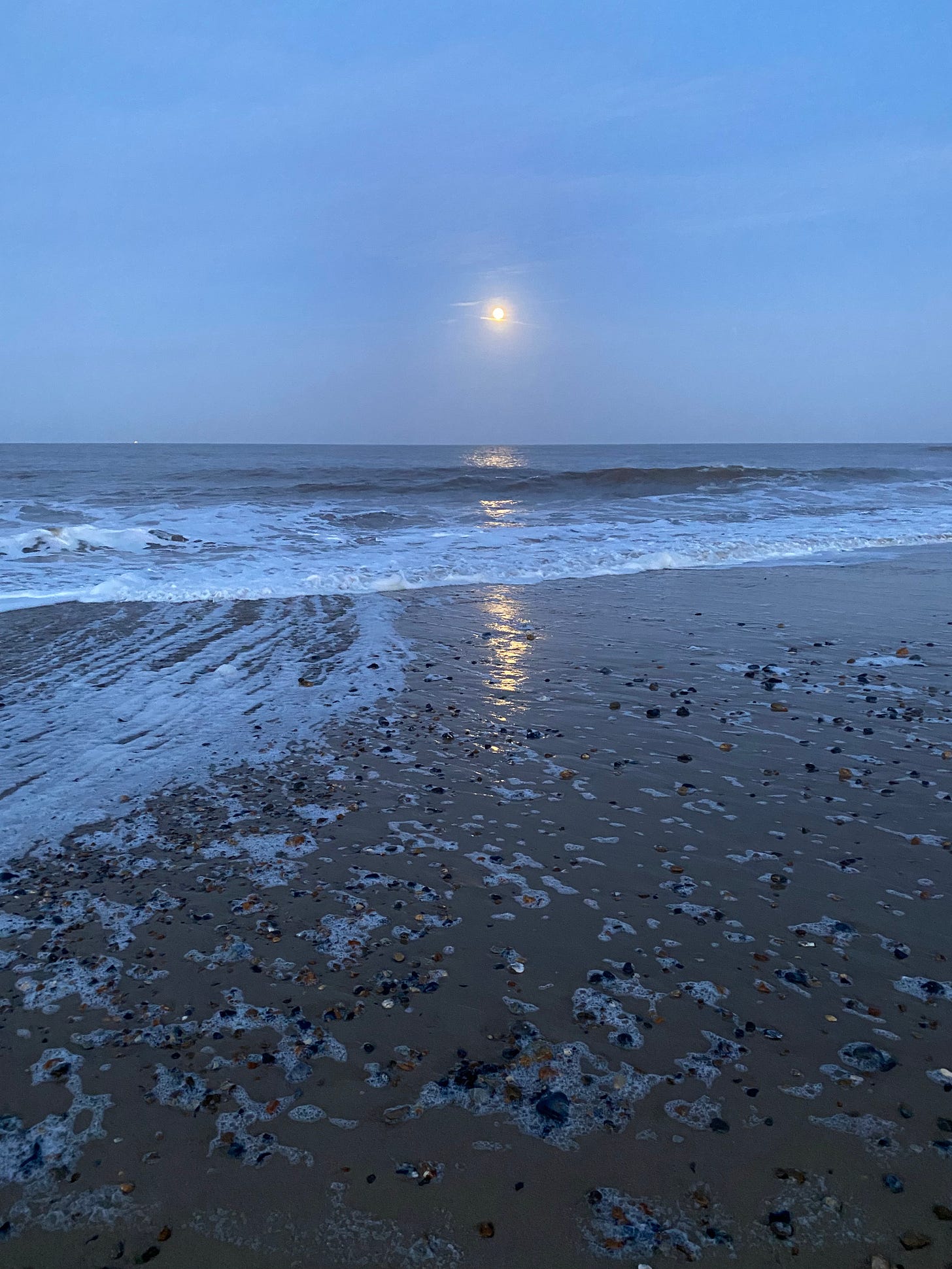
You chose such beautiful poems and I’m going to explore Edward Thomas writings. I love everything about Imbolc. It’s magical to see the stirrings of spring coming from the earth…and moon! In my garden the closed hellebore buds are tentatively emerging. But they are ever so cautious! knowing that frosts and snow are still about. In fact we had a little cold snap a week ago which brought snow for a day. The hazelnut was magnificent! festooned in gold chains in a white lacey tree and white-blanketed garden. I had never see the tree like this! And the moon was coming to fullness! Your soup looks gorgeous and I will try it. Today I’m making nettle soup with the first furry green shoots. Thank you for your lovely and evocative writing.
I so look forward to your writings and have been inspired by you to search out more information on the things you discuss. I am currently reading, and enjoying, Eleanor Parker’s Winters in the World. I am intrigued by your story of candles used in church sanctified healing ceremonies. Might this be similar to Mexican milagros?